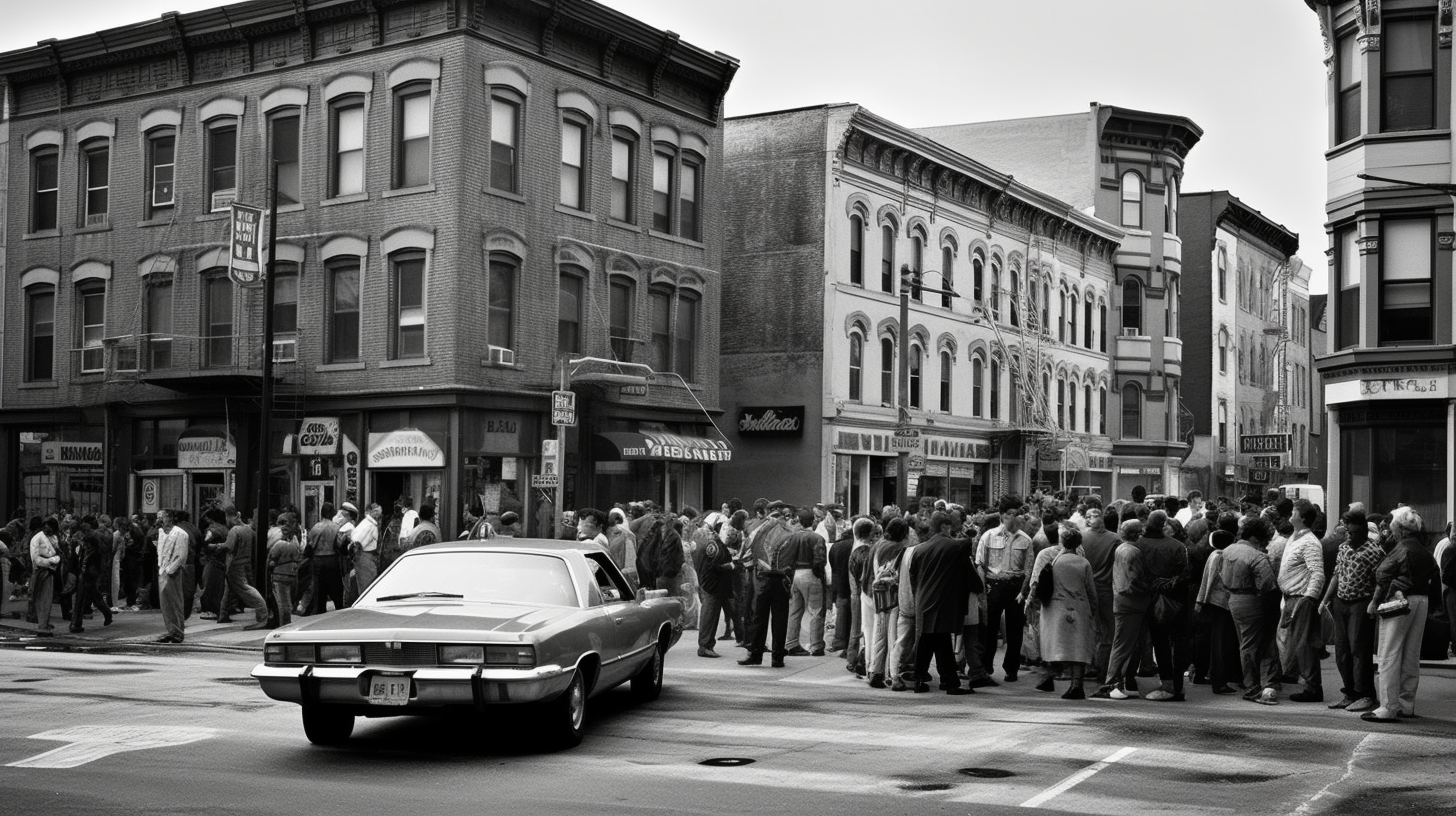
We dive into a story, shrouded in lavender yet tinged with fear. The Lavender Scare, a haunting period in American history, refers to the systematic persecution and firing of gay men and lesbians from the United States government workforce. It was an era of profound intolerance.
Cast your mind back to the 1950s, a decade which witnessed a wave of anti-gay sentiment in America. This era, overshadowed by the fear of communism, was also the stage for the homophobic purge. Concurrent with the Red Scare, the Lavender Scare was a period of intense scrutiny and oppression directed toward the LGBTQ+ community. It was undeniably, a difficult time.
To discuss the Lavender Scare is to reclaim our history, as painful as it may be. Understanding this period provides an invaluable perspective on the struggles endured by our predecessors. It highlights the dire consequences of fear and prejudice. Further, it informs our fight for equity and dignity today, echoing the need for continued advocacy. Ignorance is not bliss. Not in this instance.
Origins of the Lavender Scare
As the 1950s dawned and the Cold War tightened its icy grip, the Lavender Scare found fertile ground to proliferate. Government-funded investigations, driven by paranoia and intolerance, turned their focus towards gay men and lesbians within their ranks. Homosexuality became an unfortunate target, entangled in the complex web of national security concerns.
The Lavender Scare was born out of the widespread fear of communism. The Red Scare, a mass paranoia about communist infiltration in America, was at its peak. The perceived correlation between homosexuality and communism was spurious yet devastatingly impactful. The State Department, among others, started compiling lists of "suspected" gay and lesbian government employees. Unjustly, these individuals were considered a "security risk," due to the baseless assumption they were susceptible to communist blackmail because of their
The impact of these discriminatory practices was both immediate and chilling. Thousands of federal employees were scrutinized solely on the grounds of their perceived sexual preferences. An executive order, signed by President Eisenhower, initiated this witch-hunt. The order demanded the dismissal of any government employee found to be gay or lesbian.
Many talented individuals, like astronomer Frank Kameny, were forced to lose their jobs. Kameny, an astronomer turned activist, would later play an essential role in the fight against the Lavender Scare. His story, like many others, serves as a painful reminder of the personal toll exacted by this period of prejudice and fear.
Effects of the Lavender Scare
Imagine waking up one day, and simply because of who you are, you're deemed a threat. That was the reality for thousands of government employees during the Lavender Scare. They faced insurmountable prejudice and ostracization, all because they dared to be true to themselves. It's a travesty to say the least.
The personal lives of these brave individuals were torn apart. Many, suspected of being homosexual, were abruptly ousted from government service. The chilling code "Sex Perverts in Government Service" was used to classify and dehumanize them. This Cold War persecution of gays and lesbians was both brutal and systematic. Innocent people lost more than their jobs; they lost their dignity.
The Lavender Scare left an indelible mark on the LGBTQ+ community. Fear ran rampant, as the gay community found themselves the target of baseless accusations and prejudice. This resulted in a wave of self-censorship and secrecy, with gay people living in the shadows, unable to be openly gay without fear of reprisal.
Beyond the personal, the Lavender Scare had far-reaching societal implications. It not only stained the Federal workforce but also poisoned the perception of homosexuality in the broader society. The notion that gay people could no longer be trusted in government roles echoed through the corridors of power, and into the heart of the American citizen.
In a cruel twist of fate, some individuals took their own lives as a direct result of the Lavender Scare. The personal stories that have emerged from this era are heartbreaking. They serve as a stark reminder of the devastating effects of ignorance and intolerance.
This chapter of our history is a dark one, seeped in profound injustice. The Lavender Scare forced countless individuals into hiding, living lives of quiet desperation. It's a tale of loss, fear, and resilience, woven into the fabric of our past, shaping our fight for equality today. But that's not where the story ends.
Resistance and Advocacy against the Lavender Scare
Despite the seemingly insurmountable adversity, a glimmer of resistance began to emerge. Courageous individuals and progressive organizations dared to challenge the status quo. They began to advocate for gay and lesbian employees, fighting to protect their right to work in the federal government. Their fight was relentless.
Among the brave was Frank Kameny. An astronomer by profession, Kameny found himself barred from federal employment due to his
Legal challenges started to arise, targeting the unjust Executive Order 10450. Despite the oppressive political climate of the Cold War years, these actions marked a significant turning point. They indicated that persecution of gays and lesbians in the federal government would no longer be silently endured. The fight was on.
Public backlash also began to stir, albeit slowly. As the persecution of homosexuals within government agencies became more public, the American citizen began to question the morality of such actions. The tide of public opinion started to shift, albeit incrementally. These ripples of dissent were the precursors of the wave of acceptance we strive for today.
From this darkness, the seeds of change were sown. The Lavender Scare, as horrific as it was, ignited a fight for equality that continues to this day. The resistance that began in these tumultuous times has evolved into the powerful advocacy we witness now. The legacy of the Lavender Scare is a complex tapestry of pain and progress, deeply woven into the fabric of our history. We remember, so we can continue to fight.
Systemic Discrimination within Federal Employment
The depth of discrimination within federal employment is staggering. Homosexual employees found themselves entangled in a web of systemic bias. They were targeted, scrutinized. Their
We look back at Executive Order 10450, a devastating policy. Signed by President Eisenhower, it barred and fired employees from federal employment based on their "sexual perversion." Thousands of federal workers lost their jobs, their dignity stolen, their lives upended. It was a relentless purge.
This infamous order was enforced with vigor. Government agencies like the Federal Bureau of Investigation (FBI) and the Civil Service Commission held the reins, casting wide nets of suspicion. Security clearances were denied. Careers destroyed. Every government service, every branch of the federal workforce, stained with this injustice.
The painful irony? This occurred under the banner of 'national security.' A twisted interpretation that equated homosexuality with being a security risk. It's unthinkable, unimaginable. The aftermath was heartrending: many took their own lives, unable to bear the torment.
You know what's disheartening? Historian David K. Johnson estimates that at least 5,000 federal employees were fired during the early years of the Cold War due to their perceived homosexuality. How many more had their lives ruined? How many dreams were shattered? I shudder at the thought.
Those dismissed were not just numbers; they were people. Individuals with aspirations and families. They contributed to the federal workforce, aiming to serve their country. In return, they received prejudice and bigotry.
Today, I remember them. I remember their struggles, their unseen battles. And while I navigate through this murky history, I can't help but seethe with anger. These were unjust times, my friends. They deserve our recognition, our empathy, and our resolution to never let such hatred go unchecked again.
McCarthyism and the Second Red Scare
The Lavender Scare was a twin of another witch hunt, the Red Scare. A horrifying era fueled by Senator Joseph McCarthy's anti-communist rhetoric. But do you know what's truly terrifying? How seamlessly homosexuality and communism were intertwined during this time.
McCarthy, in his misguided fervor, found an easy target in the gay community. He capitalized on societal homophobia, reinforcing it. The flawed logic was such: if one was a communist, they must be morally bankrupt. If morally bankrupt, then surely a homosexual too? Twisted reasoning, isn't it?
Moreover, it was alleged that being homosexual made one susceptible to blackmail, thus posing a threat to national security. Imagine the audacity of the claim! The lives of countless gay people were destroyed, not for any wrongdoing, but purely based on their
The U.S. government, in an egregious display of homophobia, even labeled them as "sex perverts in government service." The irony of Senator McCarthy leading this crusade isn't lost on me. Remember, every active communist is twisted mentally or physically, he said. And I ask, what about those who twist reality to fit their prejudices?
The Red Scare only heightened the atmosphere of fear and persecution. In these years of the Cold War, the harassment of gay men and women wasn't merely an unfortunate byproduct—it was a cruel intention. I tremble with anger recalling this period, this abuse of power that seeped into every corner of society.
This, my friends, was Cold War political culture. It wasn't merely about rooting out communists. It was about controlling moral and social norms, dictating who had the right to exist within society. And that, I assure you, is a blatant violation of every American citizen's rights.
The Emergence of Advocacy and Resistance
In the face of oppressive anti-gay measures, resistance arose. It was courageous. It was inspiring. It was necessary. The systemic persecution of gays and lesbians ignited the spark of the gay rights movement. We began to fight back.
Frank Kameny was one of those brave souls. An astronomer by profession, Kameny was fired from the Army Map Service due to his
Kameny took his case all the way to the Supreme Court. He lost, yes. But the fight wasn't in vain. His efforts galvanized others, inspiring a wave of activism within the LGBTQ+ community. It wasn't just about his job; it was about his dignity, our dignity. Kameny's resistance was a significant turning point.
Slowly but steadily, change came. By 1975, the Civil Service Commission announced new regulations. Gay men and women were no longer barred or fired from federal employment based on their
In the face of hatred and bigotry, the LGBTQ+ community forged a path of resilience and resistance. Advocacy groups formed, protests were held, and legal battles were fought. Kameny himself led one of the first gay rights protests in front of the White House in 1965. We demanded change, and slowly, it came.
The Lavender Scare is a stark reminder of our past. It symbolizes a time of unjust persecution, but it also stands as a testament to our resilience. The scars remain, yes, but so does our resolve. It's our duty to remember and ensure that such a chapter of fear and discrimination is never repeated. Our struggle continues.
Conclusion
Revisiting the Lavender Scare is undeniably painful. It brings to light a time when being oneself was weaponized, a crime warranting punishment. Recognizing this bitter period is crucial, not to dwell in past hurts, but to see our journey, to acknowledge the battles won.
Yet, the shadows of the Lavender Scare extend beyond the pages of history. They still linger, reminding us of the challenges that persist. It's a lesson in fear, prejudice, and the power of courage and love.
The key to confronting the echoes of the past lies in ongoing advocacy and awareness. The stories of those who dared to resist, to demand respect and dignity, inspire us in our contemporary fight. We stand on the shoulders of giants, drawing strength from their resilience.
Our history fuels our present, propelling us towards a more inclusive future. We're called to hold the torch once carried by figures like Kameny, illuminating the path for others. In remembering, we resist. In resisting, we create change.
As we step forward, let's use the lessons learned from this dark chapter in our history. Let's ensure no one, ever again, has to fear their truth. We aim for a world where love knows no fear, where authenticity is celebrated. It's within reach. Together, we can shape this reality. Let's continue, for the journey isn't over yet.
Featured collection
Get onboard with out awesome collection of LGBTQ+ exclusives!
Outer Peace Gear
Outer Peace Gear
Outer Peace Gear
Outer Peace Gear
Outer Peace Gear
2 Color(s) Available
Outer Peace Gear
Outer Peace Gear

















